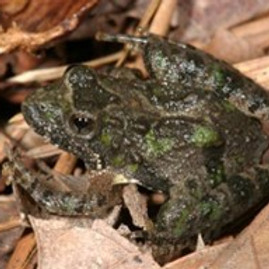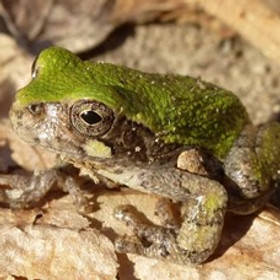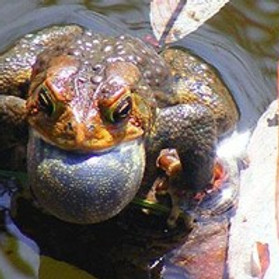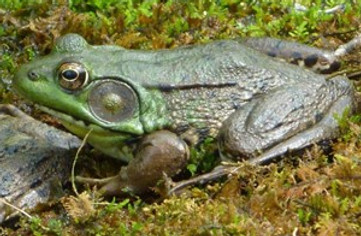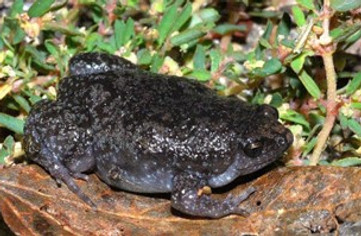Pond Ecosystems
A pond is an area of still, fresh water, typically smaller than a lake, with sunlight able to penetrate all the way to the bottom. Ponds can be formed naturally or created by humans.
A variety of plants and animals rely on ponds, with the base of the food web supported by free-floating algae and aquatic plants. Some ponds hold water year-round (long-standing), while others are seasonal and dry for part of the year (vernal).
Human-made Ponds
Human-made ponds serve many purposes:
-
Rural residential: Ponds add aesthetic value and can be stocked for fishing.
Urban residential: Retention ponds trap runoff from buildings and roads, helping manage stormwater.
Agricultural: Retention ponds provide water for livestock and crops, and they also trap sediment and excess nutrients from farming practices, improving the quality of water that drains into nearby streams.



"A Summer Pond" by enneafive CC BY 2.0
"Retention Pond" by hyku CC BY 2.0
"Retention pond, vineyards, and houses" by winecountrymedia CC BY 2.0
Pond Flora
These are are the plants that are commonly found in or around ONSC’s pond:
American Sycamores (Platanus occidentalis): These large trees grow near ponds and creeks, providing habitat for wildlife and dispersing seeds in “sycamore balls.” Their peeling bark and pale branches are distinguishing features.
Images: Bark by Cathy Dewitt CC BY-4.0 and leaves by Allen Bridgman CC BY-4.0
Cattails (Typha latifolia): These tall, reed-like plants are dominant in many ponds. They spread quickly via rhizomes and wind-dispersed seeds. Indigenous peoples have been using cattails for a wide variety of purposes for hundreds, if not thousands of years.
Images: Cattails by Zachary Tipton and Flowers by Hans Hillewaert CC BY-SA 3.0
-
Every part of a cattail is edible:
-
Boil and eat flowers, young shoots, and stems
-
Eat lower leaves in salads
-
Mix the pollen and ground rhizome roots with flour for baking
-
-
More uses for cattails:
-
Leaves for weaving baskets or mats
-
Fluffy seeds for insulation or fire tinder
-
Cattails provide excellent habitat for animals, such as the Red-winged Blackbird, which nests among them
-
Images: Female by Billy Wilson Photography CC BY-NC 2.0 and Male by Alan D. Wilson CC BY-SA 2.5






The Music of the Pond
The sounds of a pond vary depending on the time of day and season. During the day, birds and insects create much of the noise, while night time brings the calls of frogs and toads, often forming a “chorus.”
Frogs and toads prefer ponds (to other larger or moving bodies of water) for laying eggs. Here are some species you might encounter:
Spring Peepers (Pseudacris crucifer): They make high-pitched peeping sounds like baby birds.
Male Spring Peeper by Reni Akande CC BY-SA 4.0

Other Pond-Dwelling Herps
Salamanders: Amphibians like the Central Newt (Notophthalmus viridescens louisianensis), Spotted Salamander (Ambystoma maculatum), Marbled Salamander (Ambystoma opacum), and Ringed Salamander (Ambystoma annulatum) breed in ponds, laying eggs with a protective jelly layer around the mass.
Water Snakes: Species like the Midland Water Snake and the Mississippi Green Water Snake (Nerodia spp.) hunt frogs and other amphibians in ponds.
What is a Herp?
The term "herp" refers to reptiles and amphibians, which are known as herpetofauna.
The word "herp" comes from the Greek word herpeton, which means "creeping animal".
Examples of herps: frogs, toads, salamanders, toads, frogs, turtles, snakes, and lizards.
Other Pond Fauna
Bats: Bats hunt insects and may swoop down over ponds for a drink of water. For more information on bats in the Ozarks, visit our Nocturnal Adaptations page.
Insects: Pond insects include dragonflies, which come to ponds to hunt and mate, and water-dwelling species like Water Striders (Gerridae) and Water Boatmen (Corixidae), both of which have fascinating adaptations for living on or below the water surface.
Images: Water Strider by Vid Pogacnik CC BY-SA 4.0 and Water Boatmen by Piet Spaans CC BY-SA 2.5


Additional Resources
Pond Management - Learn best practices for pond management, including water quality, fish stocking, and habitat conservation.
Cattail Uses - A guide to the many uses of cattails as a food source and for crafting purposes.
Dragonflies and Damselflies of Arkansas - Identify the various species of dragonflies and damselflies that can be found in Arkansas.
Herps of Arkansas - Comprehensive identification guide for reptiles and amphibians in Arkansas.
Frog Calls of Arkansas - Listen to the calls of the 23 frog and toad species found in Arkansas.
FrogWatch USA - A community science project that allows people to contribute to the monitoring of frog populations across the United States.


